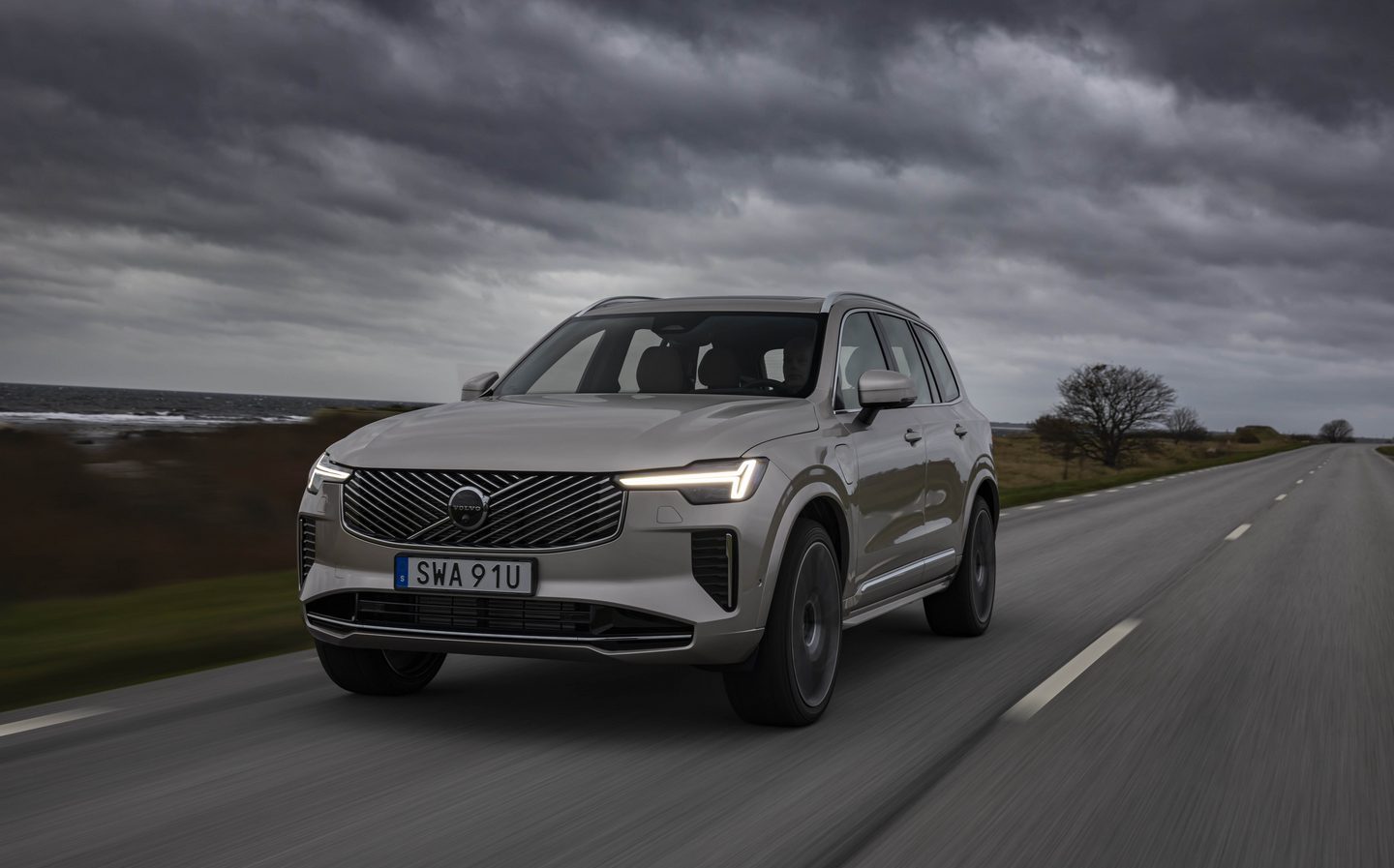Volvo XC90 T8 2024 review: Updates fend off ravages of time but clock is ticking for petrol-powered seven-seater
Thor’s hammers have been hollowed out
It’s not a particularly fresh observation to say the pace of technological change these days is absolutely frightening. Barely have you satisfyingly peeled off that protective cover from your brand-new smartphone than the model is rendered immediately obsolete by another product.
And today’s AI is of a standard where it can convincingly deepfake imagery and videos that make you question precisely what’s real, and what’s not. Meanwhile China is working on some terrifying quadruped robots that look like the dog-things that wiped out humanity in the Black Mirror episode Metalhead.
The Volvo XC90, though, seems to be standing still. This is not to suggest its Swedish maker is technologically stunted, you understand; quite the opposite, in fact — just look at its electric spin-off Polestar and the onslaught of its own EX-badged zero-emission models, either on sale already or in the pipeline for the near future.
But the second-generation XC90, which comes with a petrol engine, is soldiering on without replacement despite the fact it’s now nine years old. Normally, models are fully replaced after eight years, and for a luxury, high tech model, it’s like continuing to sell abacuses in an age of the scientific calculator.
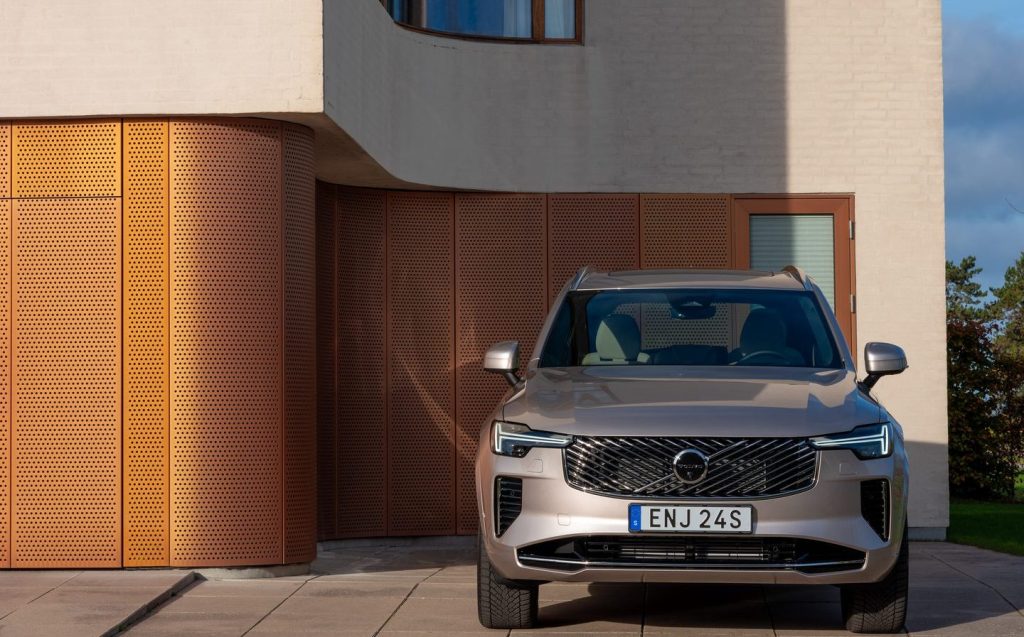
The things is, Volvo knows that some people still like to use an abacus. And if you think I’m implying that that refreshed XC90 is a doddering old-timer with advanced senility, let me nip that in the bud now: it doesn’t feel antediluvian in the slightest.
While there’s been a the proliferation of touchscreens and augmented-reality head-up displays in automotive interiors since the 2020s, the XC90’s slow and steady tech advancements represent something of a refreshing antidote. Its interior is still a simple, calming and beautifully presented place to spend time.
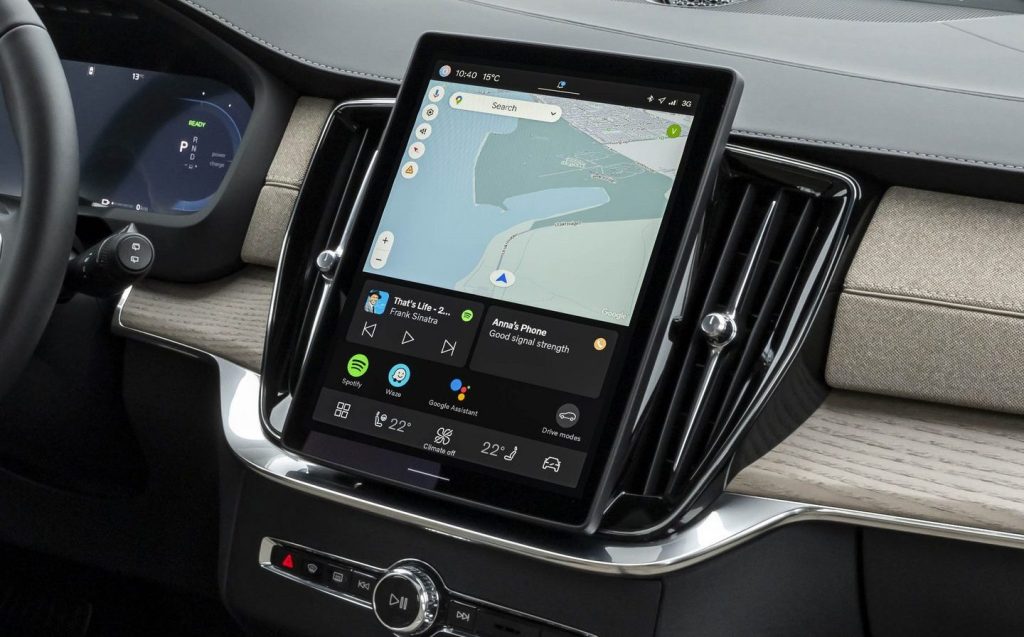
True, its evolution continues in this iteration with a 11in Google-powered touchscreen, lifted from the electric EX30 and EX90 relations, which replaces the 9in infotainment display that had served since 2015. But that’s pretty much all the cutting-edge equipment the Volvo’s cabin needs.
Once again it’s complemented by the 12.3in digital instrument cluster, and together they make for a decent interface. You still need to prod and poke at the main screen a little more than would be ideal, but there is still a complement of physical buttons, and it works much better than before.
The rest of the XC90’s interior is familiar stuff. You still get the comfiest seats out there, seven of them in total, coupled with the true-wood trim finishes and a compelling blend of textures to render this as one of the best — and most calming — cabins in the industry.
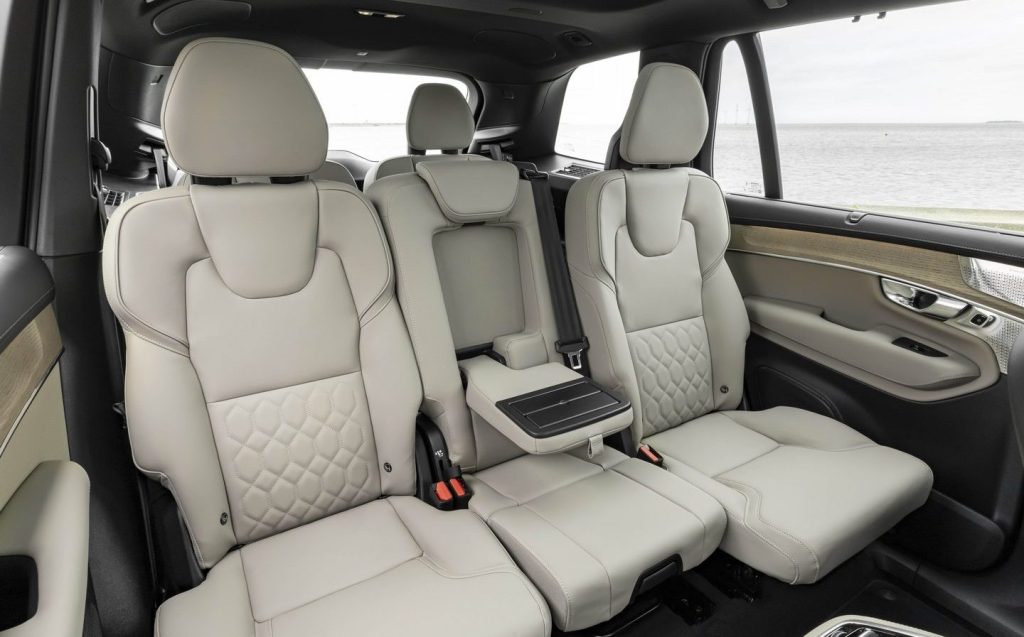
It’s not only lovely to look at and sit in, and fitted with plenty of appealing equipment, but it’s spacious, too. There’s just enough room in the third row of seats, for instance, that people up to 5ft 8in tall can sit back there in reasonable comfort (according to Volvo), while the boot measures anything from 262 to 1,959 litres, depending on how many of the chairs onboard are occupied or folded away.
That’s either roughly the same amount of luggage space as a modern-day supermini in the former case — not bad at all in something less than five metres long that can seat seven — or pretty much what a van could carry in the latter.
On the outside, the updates to the XC90 are even more reserved than they are within. The “Thor’s hammer” daytime running lamps (DRLs) are the same shape as before, but now only their outlines are illuminated, rather than being solid lights.
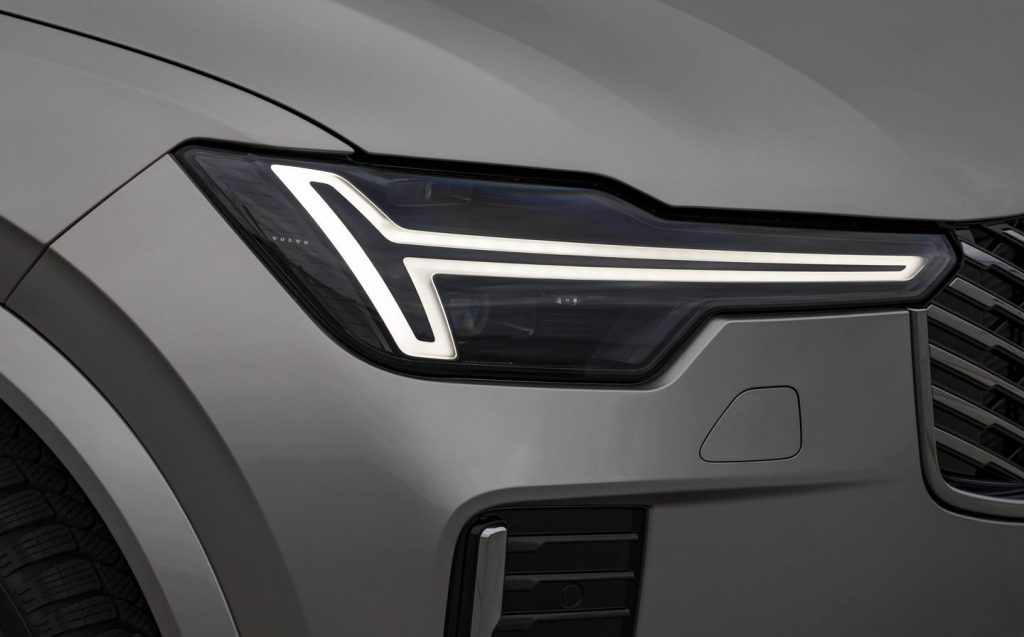
Aside from a strange diagonal radiator grille that looks rather like a “wrapover” top, the exterior tinkering has manages to keep the Volvo SUV looking classy and modern, with darkened taillight clusters, a new body colour and a gentle resculpting of various body panels.
Another area where things stay more or less the same is in terms of drivetrains, although the B6 mild-hybrid has been dropped from the line-up.
This decision leaves the B5 mild-hybrid petrol as the entry level, with the T8 plug-in hybrid electric vehicle (phev) topping the range. Neither of these has been changed in terms of outputs or eco-stats.
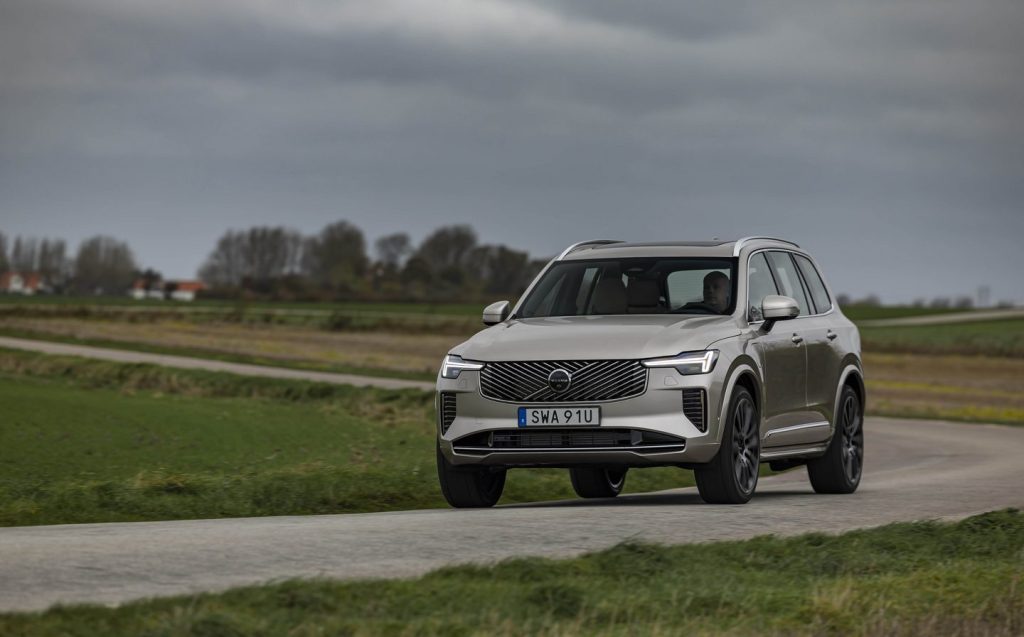
There have been some useful changes to the chassis, though. The standard dampers are “frequency selective”, which is a purely-mechanical system that in basic terms adjusts the stiffness depending on the shocks being sent through them. But there’s the option of full four-corner air suspension, too, for clever electronically-controlled waftiness.
Having driven both a B5 on FSDs and a T8 on air, we’re happy to report that you can’t end up with a “bad” Volvo XC90 in terms of how it’s sprung, as the regular mild-hybrid car performs admirably and feels suitably upmarket, with a fine balance of ride and handling to go with it. The T8, though, with full air suspension is another step on again.
The unruffled way it covers ground is very impressive. Its sense of rolling refinement and supreme ride comfort is exemplary, and makes the idea of covering hundreds of miles at a time in it — complete with a car chockful of unruly kids, even — seem a doddle. The T8 XC90 also handles reasonably well for a heavy SUV, with good body and wheel control, and pleasing steering.
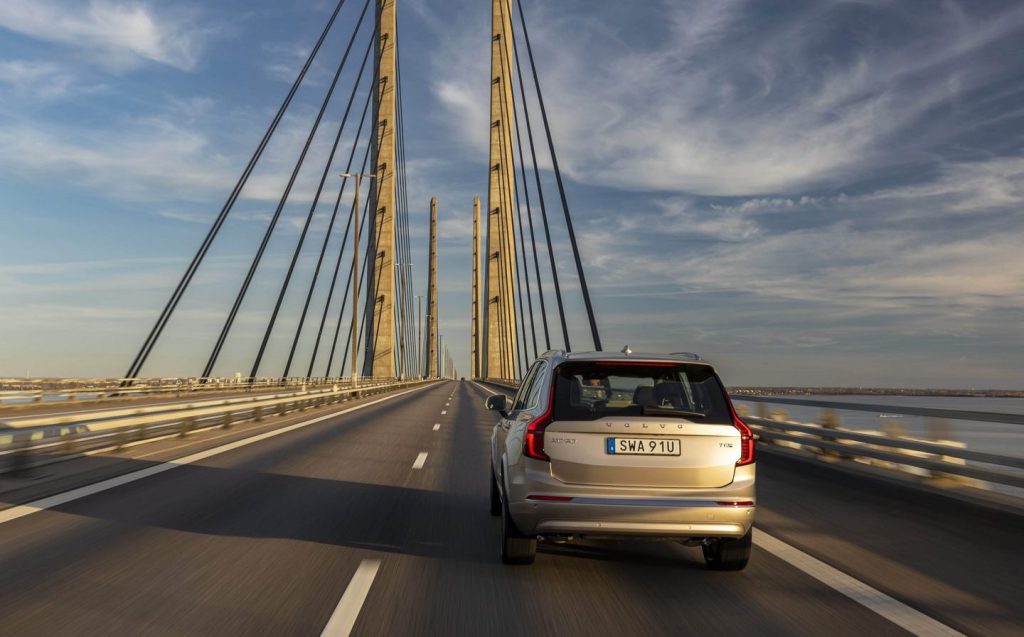
What’s more, the fitment of the additional supercharger to go with the turbo means its 2-litre engine sounds far more interesting than the B5 during bouts of acceleration. There’s also no mistaking the difference between the 247bhp of the B5 and the thumping 449bhp of the T8. If you want your high-end SUV to feel like it has a V8 engine under the bonnet even when it “only” has a four-cylinder unit, you’ll need the phev, as it has so much get-up-and-go that you’ll soon forget the XC90 weighs nearly 2.3 tonnes in this specification.
But let’s be clear, even with comfortably more than 400bhp this is not a sporty SUV in any way, shape or form. Its remit is classy, easy-going comportment.
That said, any criticisms levelled at the T8 pertain to the hybrid side of its character, and the price of it all.
First of all, a 14.7kWh battery pack is not big for a modern phev. Officially it provides an electric range of 39-44 miles, but you’ll find many plug-in rivals will offer well in excess of 50 or even 60 miles in 2024, which makes the Volvo look a little undernourished in this department.
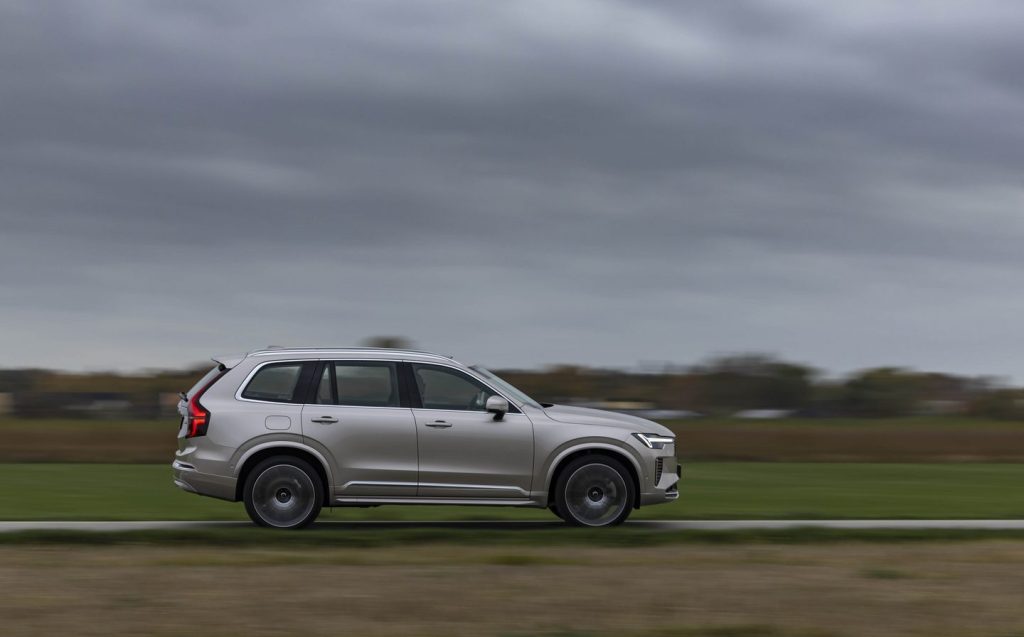
The smaller battery also means lower day-to-day fuel economy. Again, the printed stats for the car are in the exaggerated range of anything between 176 and 235 miles-per-gallon, but as with any phev those sorts of returns will only be remotely (and rarely) achievable if you plug in at every opportunity and run off mains electricity almost exclusively. Our Volvo test car only returned a modest 30.7mpg across 65 miles of mixed-roads motoring in our hands.
To be fair to it, we were testing the hybrid functions of the car rather than running its battery all out of juice, so there was still another 18 miles supposedly left in around 50 per cent of the pack’s capacity at the end of our test drive, according to the Volvo’s computer. But it’s clear the relatively small battery unit will be a hindrance to the XC90’s real-world running costs in the longer term.
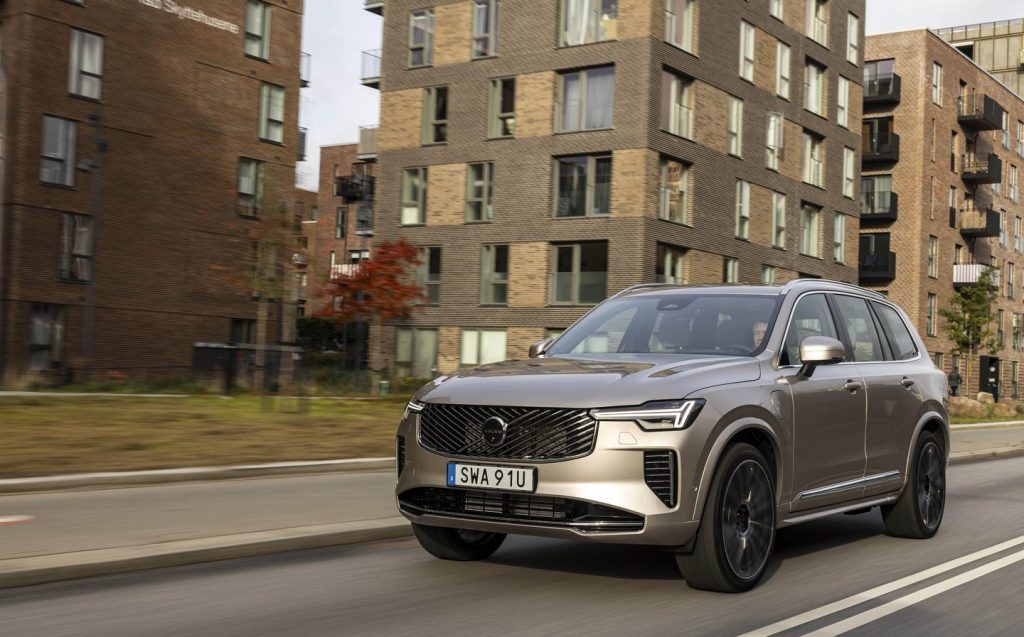
And talking of money, the XC90 has got remarkably expensive over the almost-decade since it launched. I remember being at the original debut of the second-gen flagship Volvo SUV in 2015 and, back then, the T8 Twin Engine (as it was known) had 400bhp, 25 miles of electric range, and cost from £59,955. Today, even the B5 is a 64-grand machine, while the T8 begins at a chunky £72,650. Opt for a bells-and-whistles Ultra like our test car, and you’ll be staring down the barrel of an eye-widening £84,150 Volvo.
Yes, yes, we know; inflation and all. But… ouch.
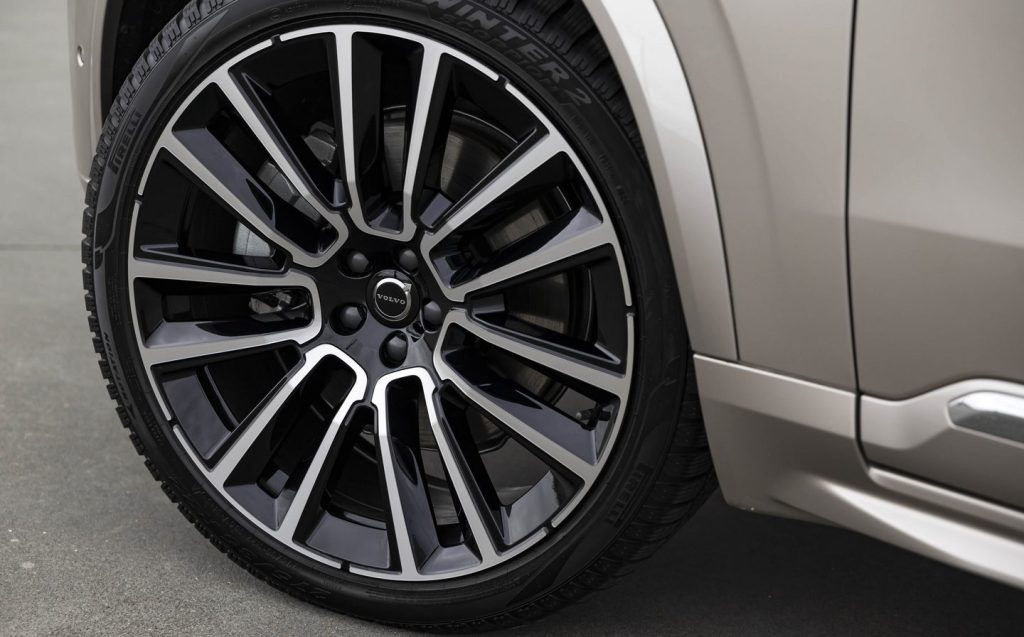
The defence for this aspect of the XC90 is that all its comparable rivals will require similar levels of expenditure to own, so ultimately it doesn’t feel like it is massively overpriced, even if we’d be a lot happier if the top-spec car were no more than £75,000.
Aside from that, there’s much to love about the Volvo XC90 and precious little to actively dislike. Its sleek and stylish exterior is also in no way showy or ostentatious — which is not something you can say of all seven-seat SUVs — and it continues to have a cabin which sets standards in the car industry.
It’s incredibly comfortable to drive, possessed of plenty of power as a phev, and it’s as practical and deeply desirable as ever.
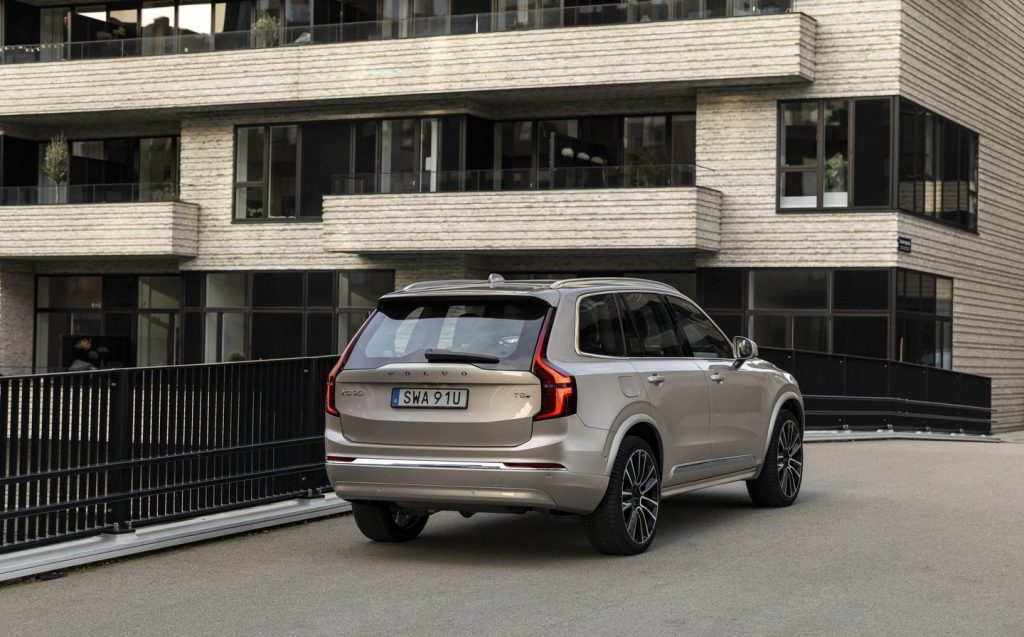
So, while the pace of change these days is indeed fearsomely rapid, sometimes it’s nice when things stay reassuringly the same. And in our opinion, that makes the 2025 Volvo XC90 one of the best seven-seat SUVs going.
Well, until that EX90 comes along, that is. The XC90 must continue on alongside its electric sibling for the foreseeable, but ultimately the combustion-powered car —as good as it is — will have to fully make way for the electric version in time. So perhaps grab an XC90 now, while you still can. At the end of the day, there’s no halting the march of progress, is there?
Chinese carmakers
Volvo is a Swedish brand with headquarters in Gothenburg. It is owned by Geely, a privately-owned Chinese car giant.
Related articles
- If you found our review of the updated Volvo XC90 interesting, you might like to read our review of the electric alternative, the EX90
- Here are all the car makers’ electric vehicle plans
- You may also want to read a review of its little sibling, the Volvo EX30
Latest articles
- F1 2025 calendar and race reports: The new Formula One season as it happens
- Seven great automotive events to visit this summer, from F1 to art and champagne
- Watch new Porsche 911 GT3 smash Nürburgring record for manual cars
- Skoda Elroq 2025 review: Czech carmaker can’t seem to miss with its electric family cars
- Five best electric cars to buy in 2025
- Should I buy a diesel car in 2025?
- Zeekr 7X AWD 2025 review: A fast, spacious and high tech premium SUV — but someone call the chassis chief
- Denza Z9GT 2025 review: Flawed but sleek 1,062bhp shooting brake from BYD’s luxury arm
- Extended test: 2024 Renault Scenic E-Tech review


